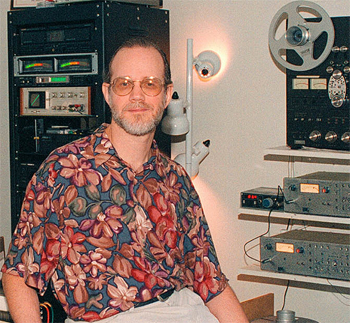Bob Katz: Mastering Audio With SpectraFoo
"It's the essential tool that just won't let you down," says Katz, observing that its versatility is the key. The SpectraFoo package incorporates standards-based level metering, high-speed, high-resolution spectral analysis, the unique Phase Torch, correlation metering, triggerable waveform display, power balancing, and a variety of power, envelope and spectral histories and phase analysis on any number of input or output channels. Whether in his day-to-day mastering business or his journalistic and research endeavors, the Metric Halo software can handle any job Katz throws at it, as he enumerates. "I've used SpectraFoo for acoustic analysis of my room to align my subwoofers. SpectraFoo generates a pulsed pink noise signal and, using its transfer function, can correlate the signal with what comes out of the loudspeakers and produce a near-anechoic measurement. I can align the subwoofers by the time delay or do a simple RTA analysis." Further, he continues, "I can use SpectraFoo to look at the noise floor of my mastering system, see the shape of the dither in real-time and make sure the dither generator is operating properly, and even get an indication of the distortion in the system instantly, if I wish. I've used it to measure jitter as well as distortion." Those analysis tools have also played an essential part in his research, he reveals. "I've used SpectraFoo to make tests and measurements of both analog and digital devices or pieces of audio equipment that I am reviewing for magazines." He continues, "My book, 'Mastering Audio' [Focal Press, 2002], contains many images that were created using SpectraFoo to illustrate the problems with or the advantages of certain types of equipment. For example, I demonstrated in the book how, even if you're working at 44.1kHz, there is an advantage to upsampling to 88.2kHz or 96kHz to avoid distortion in compressors and other types of non-linear processors." Metric Halo's SpectraFoo even incorporates a metering system invented by Katz. "It's called K-System metering," he explains, "which is very ergonomic for mixing and mastering and to get an idea of the apparent loudness of your material, as well as a visual indication of overloads. I can do that at any sample rate up to 96kHz. Katz's K-System metering offers a standard, integrated approach to monitoring, leveling practices, metering, and metadata in order to bring objectivity back into the perception of loudness. Mixing and mastering processes are standardized through the K-System by aligning monitor calibrations with metering calibrations, and making subjective loudness reflect different program material and listening environments. The K-System meters, correlation meter, phase scope and the continuously running FFT also serve another, less practical purpose, adds Katz. "Even if I don't look at them they make great eye candy for the client!" Katz also uses the company's hardware interface with SpectraFoo. "I also own Metric Halo's Mobile I/O," he reveals. "While I haven't been active doing much recording lately - I've been doing mastering almost exclusively - I do use the MIO preamps and interface to bring the analog and digital information into and out of SpectraFoo, including the measurement microphone." Visit Bob Katz's www.digido.com website for a wealth of archived information and technical articles on digital audio, especially the fine art of mastering.
|
|
|

